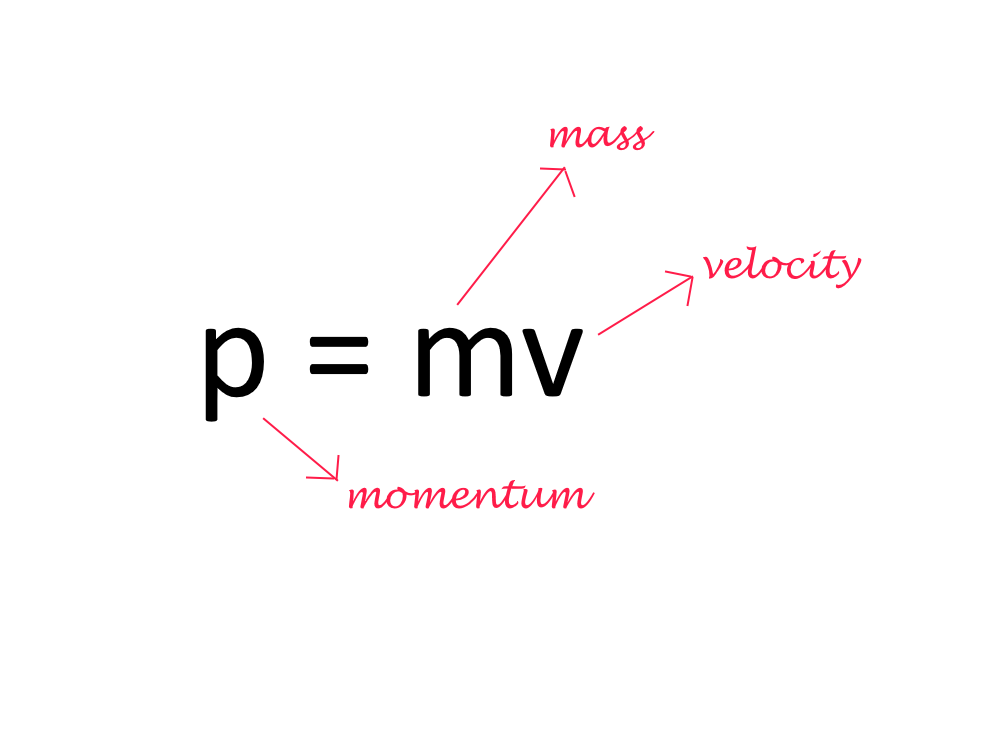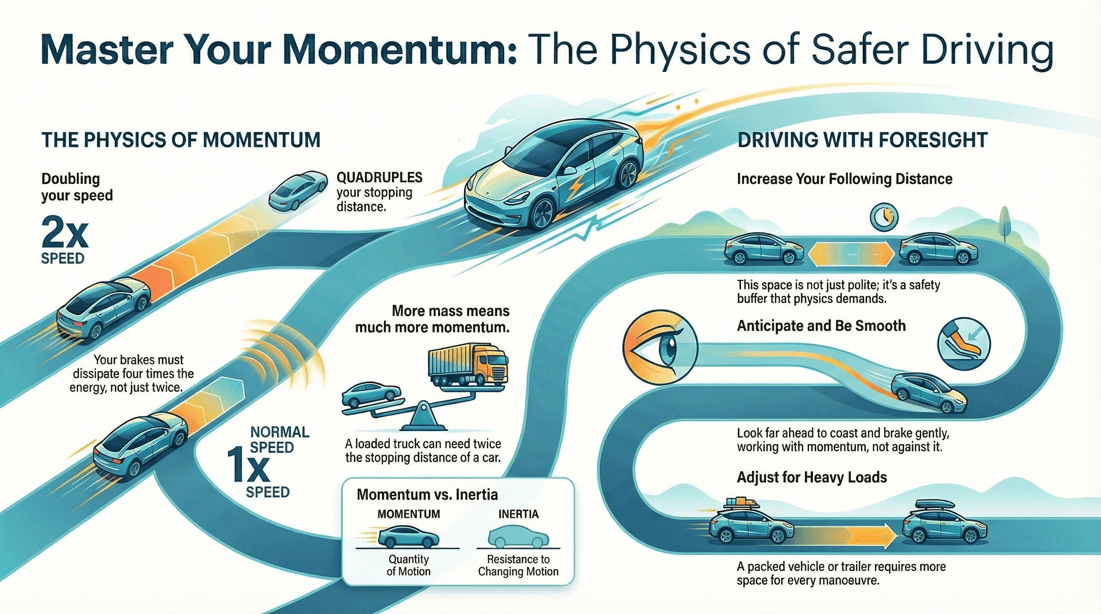Momentum
⫸ Free YouTube Subscription
Every driver needs to understand how momentum affects their vehicle because it plays a crucial role in safety on the road. Momentum governs how your car responds when accelerating, braking, or turning, influencing your control in everyday driving and emergency situations. Without a clear grasp of momentum, even simple maneuvers can become risky, especially at higher speeds or with heavier vehicles.
What is momentum in driving and how does it affect vehicle control? How does momentum change when you speed up or slow down? Why does a heavier vehicle have more momentum? How can understanding momentum help prevent accidents? What happens to momentum during a collision? How does momentum impact your ability to stop quickly or take sharp corners? What role does momentum play in a collision? How does speed affect your ability to maintain control? Can the weight and speed of your vehicle make braking more difficult?
This page breaks down the physics of momentum in easy-to-understand terms that directly relate to driving. It explains how momentum interacts with forces like braking and turning, helping you anticipate your vehicle’s behavior. By learning how momentum affects handling and stopping distance, you can make smarter, safer decisions behind the wheel. Whether you’re navigating city streets or cruising on highways, understanding momentum gives you the confidence to avoid hazards before they become dangerous.
Momentum is the product of your vehicle’s mass, including any load, and its speed. The greater the momentum, the more effort and distance it takes to accelerate, slow down, or change direction. This means heavier vehicles or those moving faster will respond more slowly to sudden maneuvers. For example, a fully loaded truck traveling at highway speed requires significantly more distance to stop than a small car at the same speed. Knowing how to manage your vehicle’s momentum is key to maintaining control, keeping safe following distances, and anticipating stops well in advance.
Mass:
The heavier our vehicle is, means that we need to reduce our speed because the harder it will be for the vehicle to brake or the more likely the vehicle will be to turn over when changing direction.
Velocity:
When our vehicle has a heavier than normal load, where you can, try to drive slower and bear in mind that your stopping distance will be longer.
⧋
🛈 Info:
⧋


